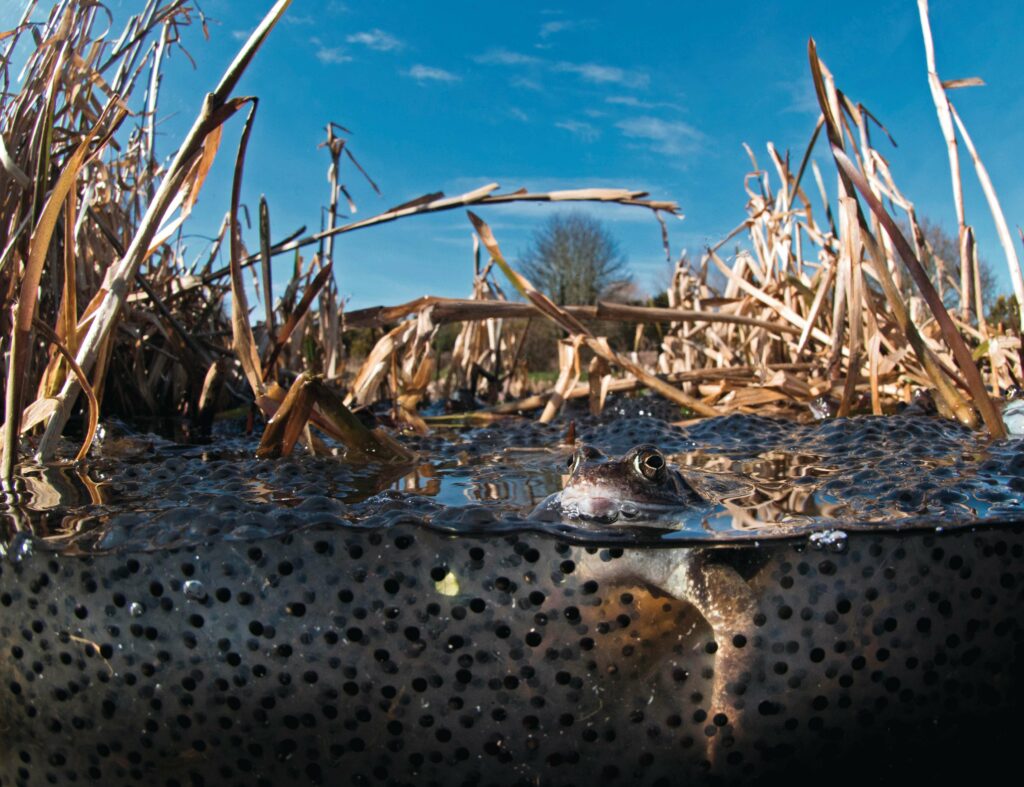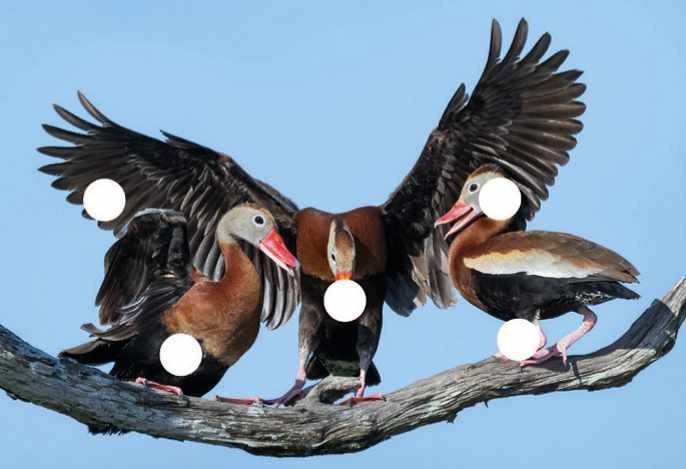
Where are all the frogs?
I’ve been keeping a record of when my frogs arrive and spawn in my fairly large pond. In 2014, we had huge numbers and the pond was alive with their thrashing. In 2020, we started to get less and less, and this year I’ve only found one small clump under a plant’s overhanging leaves.
We used to have toads’ spawn as well but nothing for a few years now. I’m very concerned as I believe there’s a disease that you’ve mentioned in the magazine. Nothing in the pond or garden has changed. Where are they all? I miss my evening entertainment!
Linda Smith, Bromley, Kent
JENNY TSE-LEON, CONSERVATION, EVALUATION AND RESEARCH MANAGER AT FROGLIFE REPLIES:
It’s very worrying to hear reports such as yours. It is most likely a combination of factors, both local (ie habitat loss) and others that apply more widely (ie the impacts of climate change).
In the last few years, we have also received reports of amphibians being active throughout the winter months in some areas, which is likely to have a detrimental impact on their life chances, including breeding success. We haven’t been aware of any new mass dieoffs as a result of disease.
Some sites are continuing to see good population numbers, but at Froglife we do seem to be receiving an increasing number of reports of amphibian numbers declining. At this stage, this is mainly anecdotal evidence, but it is still a worrying trend.
We encourage members of the public to report their sightings of amphibians and reptiles on the Froglife Dragon Finder app so that we can monitor population trends and behaviour changes.
Getting too close
The feature ‘Don’t be daft’ in the Spring issue rightly highlighted the occasionally reckless behaviour of people trying to get that ‘Instagrammable’ shot too close to wildlife. Even simply disturbing natural feeding and breeding behaviour has potentially adverse effects.
And yet, ironically, the Tales from the Bush story in the same issue describes the author disturbing a foraging brown kiwi in pursuit of an unusable photograph.
Also, in the same issue, photographer Tui De Roy is pictured “hanging out with gentoo penguin chicks”. Of course, she’s a professional and knows what’s safe and what to do to avoid disrupting the lives of her subjects, but that’s not what the layperson sees – they see a woman in close proximity to wildlife and may well think “If she can do it, so can I”.
I believe images like this, which abound in the media, are at least partly responsible for people’s reckless behaviour. We frequently see famous presenters posing with wildlife (Sir David Attenborough with the mountain gorillas being the most famous example; an image reproduced over and over again).
Isn’t it time BBC Wildlife cast the mote from their own eye and resisted publishing photographs that set a bad example to the reader? (Having got that off my chest, I’d just like to finish by saying how much I enjoy the magazine and devour it from cover to cover every month!)
Anne Waddingham, Kent
EDITOR PAUL MCGUINNESS REPLIES:
It’s a complex issue, Anne, and not one we treat lightly. We always encourage responsible wildlife photography in our magazine and online (we publish our ethical photography stance in every print issue).
We hope that readers would view Tui’s portrait in the knowledge that she is a wellrespected and highly experienced wildlife photographer with a deep respect for and understanding of her subjects.
Wildlife encounters do inevitably involve some encroachment into an animal’s environment and, as James’ tale demonstrates, even with the best intentions can result in the occasional disturbance.
Cosmic confusion
In Gillian Burke’s Spring column she suggests that dawn is slower catching up in midwinter because the Earth is at its furthest from the Sun. That is not true.
The last time that the Earth was at its furthest from the Sun in midwinter was in the 13th century. In 2023, the Earth was at ‘perihelion’ (its closest to the Sun) on 4th January and was at its furthest in last July’s heatwave.
Mark Pickin via email
GILLIAN BURKE REPLIES:
The Earth is indeed closest when it is winter in the northern hemisphere, but it is also moving fastest at this point in its journey around the Sun.
Relative to the Earth’s rotation around its axis, the sum-total of all these moving parts affects our view of the Sun as it appears in the eastern sky. So, while day length is at its shortest on the winter solstice, it takes roughly two weeks before we see the sunrise start to get earlier.
Thank you for your correction, which has sent me on a mind-bending journey, and that’s without offering the counterview for the southern hemisphere. I think I’ll need a little lie down first!
Cheers Nick
I read BBC Wildlife each month from cover to cover. Whenever I arrive at Nick Baker’s page, I think: do I really want to read all this stuff about creepy-crawlies? But as soon as I start on it I get hooked – seeing these fascinating creatures in a whole new light.
I recently had the pleasure of meeting Nick at Trees for Life, a great rewilding project at Dundreggan, near where I live in the Scottish Highlands. Actually seeing live images of these beautiful, microscopic and hugely important life-forms projected on a screen opened up a whole new world to me. Thank you Nick for introducing me to your previously invisible friends! I shouldn’t have trouble finding them – they are literally everywhere – all I need now is my own microscope!
Mave Ersu, via email
NICK BAKER REPLIES:
When I read your letter, it made me happy. The aim of almost everything I seem to do nowadays is to try and help people see the living world as a beautiful, beguiling, baffling and inordinately complex thing – and that includes every living thing, not just the obvious ones with fur, feather, watery eyes and whiskers (although they are lovely too). With that in mind, there is as much pleasure, mystery and magic to be had in a bucket of pond water as there is on any African safari. If my monthly feature and your squint through my microscope has helped you look at the world from a different perspective, then I can ask no more, my work here is done. Welcome to the microcosm.
CORRECTIONS
‘Do all female marsupials have pouches?’ April: not all female marsupials have pouches and echidnas are monotremes not marsupials.
ANSWERS TO SPOT THE DIFFERENCE

GET IN TOUCH
wildlifeletters@immediate.co.uk
Post
BBC Wildlife, Eagle House Bristol, BS1 4ST
By contacting us you consent to let us print your letter in BBC Wildlife. Letters may be edited.